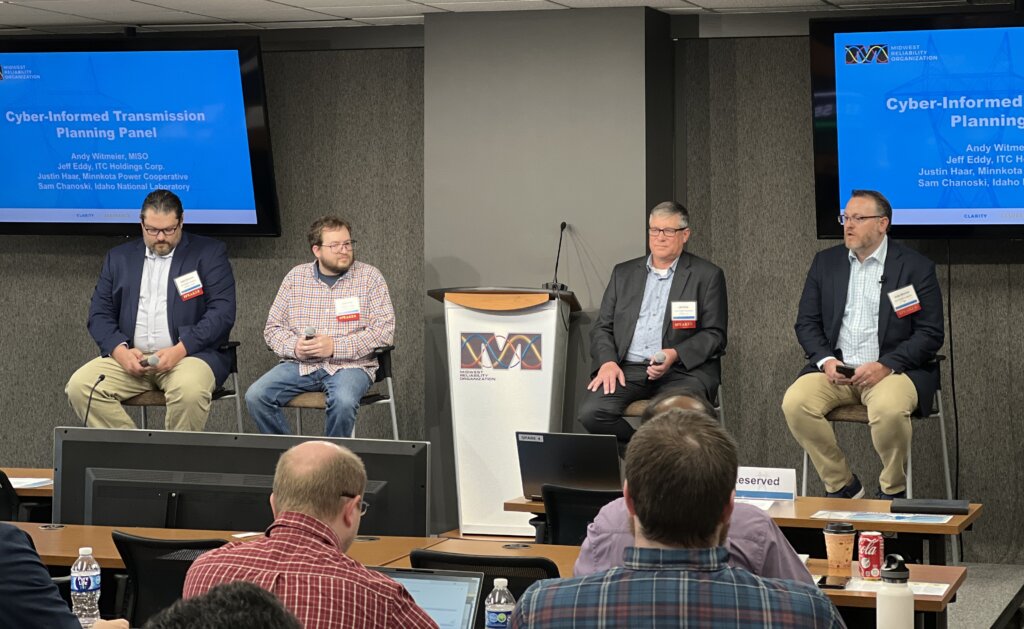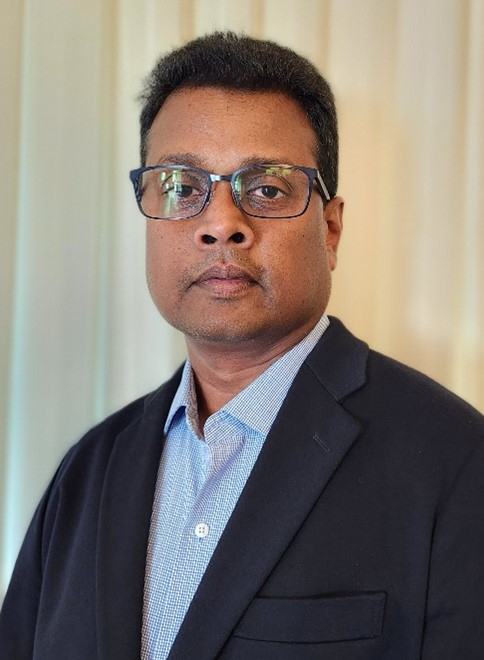
The MRO Reliability Advisory Council (RAC) hosted another successful Hybrid Reliability Conference on May 15, 2024, in Saint Paul, Minnesota. The purpose of this conference is to raise awareness and share information on important reliability topics for the region. Developing and conducting this event is a large component of the RAC’s Work Plan each year. The conference topics were informed by the risks identified in the 2024 MRO Regional Risk Assessment, which the RAC helped to develop. Below is a summary of the presentations provided, as well as links to the individual recordings.
Northland Reliability Project. Christian Winter, Manager Regional Transmission Planning (Minnesota Power), and Matt Ellis, Manager Transmission Strategy and Development (Great River Energy) presented an overview of a joint venture between Minnesota Power and Great River Energy to construct a 180-mile series compensated double-circuit 345 kV line spanning from northern to central Minnesota. The new line provides multiple benefits to the region by supporting reliability and enabling clean energy resource additions as the resource mix evolves. This project will strengthen resiliency across the region and enhance flexibility as further decarbonization and electrification of load is pursued. The presenters noted that public engagement through multiple stakeholder meetings and workshops in local communities was important in determining the final route. The Northland Reliability Project is part of MISO’s Long Range Transmission Plan Tranche 1.
Inverter-Based Resources Lessons Learned. Ali Miremadi, Principal Operations Policy and Analytics (California ISO), discussed CAISO’s lessons learned with respect to the ability of Inverter-Based Resources (IBRs) to provide Essential Reliability Services like regulation, frequency response, and voltage support. In California, the increased growth of batteries has helped manage volatility associated with high ramp periods and intermittent cloud cover during the day with high solar penetration. Ali noted operational risk when controller/inverter settings differ from specifications in the Generation Interconnection and when settings, if initially correct, are changed in the field by the manufacturer without communication to CAISO. He emphasized it is important to establish a monitoring process to ensure firmware settings remain accurate.
Grain Belt Express HVDC Transmission Project Update. Matt Holtz, Vice President of Transmission Operations, and Dr. Rajat Majumder, Director of Transmission (Invenergy), provided an overview of the bipolar, bi-directional, multi-terminal high-voltage direct current (HVDC) transmission line project (± 600 kV, 5,000 megawatts), which will deliver clean, renewable energy generated in Kansas to consumers in Missouri, Illinois, Indiana, and the Pennsylvania-New Jersey-Maryland Interconnection (PJM) area. The Grain Belt Express Transmission Project will provide unique reliability and economic benefits as an interregional merchant HVDC transmission project. The first phase of the project (542-mile HVDC line delivering 2,500 megawatts to Missouri) is expected to be completed in 2028-2029, and the second phase (278-mile line delivering an additional 2,500 megawatts to Indiana) in 2030-2031. This HVDC project will utilize the latest multi-modular voltage-source-converter technology.
Cyber-Informed Transmission Planning Panel. Andy Witmeier, Director Resource Utilization (MISO), Jeff Eddy, Director of Transmission Planning (ITC Holdings Corp.), Justin Haar, Cyber Security Specialist (Minnkota Power Cooperative), and Sam Chanoski, Technical Relationship Manager (Idaho National Laboratory), participated in a panel discussion to create awareness and generate ideas around the challenges associated with Cyber-Informed Transmission Planning. This includes factoring in the potential for cyber and physical attacks on the Bulk Electric System (BES) when engineers are planning the transmission system. This is a relatively new risk that is being considered based on the adoption of advanced technologies and the increased reliance on digital controls and communications. The panel touched on the NERC white paper on Cyber-Informed Transmission Planning published in May 2023, which outlines how critical collaboration is between both cyber security specialists and transmission planning engineers and what companies are doing now to address this emerging risk.
NATF Resilience Programs: TRMM and RESTORE. Valerie Agnew, General Counsel, and Jaime Carnes, Program Manager (North American Transmission Forum), provided an overview of the NATF Transmission Resilience Maturity Model (TRMM) and the Regional Equipment Sharing for Transmission Outage Restoration (RESTORE) program.
TRMM is a free, easy-to-use tool for transmission utilities to self-assess the maturity of their transmission resilience programs and identify improvements to increase the resilience of their transmission systems. The TRMM evaluates a utility’s strategies, policies and procedures, and the implementation of programmatic activities to support resilience.
The RESTORE program is the NATF’s regional equipment-sharing program. It is designed to enhance grid resiliency and reliability by identifying sources and facilitating equipment replacement following disastrous events. The RESTORE Program establishes a voluntary but formal agreement among transmission owners to commit to owning, maintaining, and selling to one another available spare equipment in the event of major damage to the transmission grid. This optional, self-funding program is available to NATF members for a minimal additional cost. Currently, 40 utilities are participating in this program.
– written by Reliability Advisory Council members John Harmon, Senior Operations Director, MISO, and Nandaka Jayasekara, Senior NERC Reliability and System Studies Engineer, Manitoba Hydro
About the Authors

John Harmon, MISO
Harmon is currently a Senior Operations Director responsible for MISO’s Reliability Coordination function and real-time operations engineers, including outage coordination. He has held numerous leadership positions during his 16-year career at MISO which includes operator training and compliance program implementation as well as oversight of MISO’s market functions which includes operations forecasting, unit commitment, day-ahead market, and MISO’s Financial Transmission Rights market. John has also served in various project management roles within MISO for new market product implementation and new member integration. Prior to MISO, he was an electrical engineer at an independent engineering firm supporting electric utilities in the Midwest. John has a B.S. in Electrical Engineering from Rose-Hulman Institute of Technology. In addition, John is a member of the MRO RAC.

Nandaka Jayasekara, Manitoba Hydro
Jayasekara is currently a Senior NERC Reliability and System Studies Engineer in Manitoba Hydro’s Grid Infrastructure Planning Department. He conducts system studies to support Manitoba Hydro’s major capital projects and has over 15 years of experience using various power system simulation tools. Nandaka performs specialized electromagnetic transient studies to confirm equipment specifications and expected system performance, which includes specialized hardware simulation tests to de-risk the integration of new and emerging technologies. He also coordinates ongoing mandatory NERC regulatory compliance activities relevant to NERC and Manitoba Hydro Transmission Planning standards. Nandaka received a B.Sc. degree in Electrical Engineering from the University of Moratuwa, Sri Lanka. He earned his M.Sc. and Ph.D. degrees in Electrical Engineering from the University of Manitoba, Winnipeg, Canada. Nandaka is a registered professional engineer in the province of Manitoba and a member of the IEEE. In addition, Nandaka is a member of the MRO RAC.
DISCLAIMER
MRO is committed to providing non-binding guidance to industry stakeholders on important industry topics. Subject matter experts from MRO’s organizational groups have authored some of the articles in this publication, and the opinion and views expressed in these articles are those of the author(s) and do not necessarily represent the opinions and views of MRO.